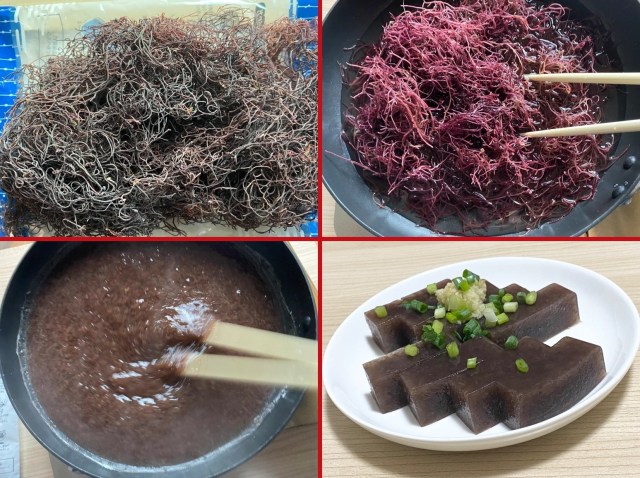
A taste of Tottori that looks very different at the start from how it ends up.
When one hears the term “Japanese food,” a couple of dishes immediately spring to mind, like sushi, ramen, and tempura. But each region of Japan also has its own local specialties, and some of these aren’t even known to people living in just the next prefecture over.
For example, our Japanese-language reporter Ikuna Kamezawa was recently talking about igisu, a specialty of her home prefecture of Tottori, in western Japan…and none of us had any idea what it was, not even Mr. Sato, who grew up in Shimane Prefecture, Tottori’s direct neighbor to the west.
So to get in touch with her roots once again, Ikuna decided to whip up a batch, and to also show us just what the heck igisu is. There’s really only one essential ingredient: igisuso, a kind of red algae also known as ceramium rubrum.
Since igisu is a dish specific to Tottori (and particularly central Tottori, not the east or west parts of the prefecture), you can’t just wander into any grocery store and buy igisuso. However, you can order dried versions online from Rakuten here, and once Ikuna had her bag, it was time to get to work.
Opening the package, Ikuna was greeted by a strong saltwater smell. The first thing to do is to wash the igisuso in water and rinse it thoroughly, picking out any other sea grass bits that you might find.
As Ikuna did this, she thought back to her childhood memories of her grandma making igisu for family dinners, since the dish is especially popular with older generations.
Once the igisuso has been washed and rinsed, place it in a pot with water (540 milliliters [18.3 ounces] of water for 40 grams [1.4 ounces] of igisuso), bring the water to a boil, and let it cook on medium heat. As the igisuso starts to cook, you’ll see it change color from reddish purple to brown.
Don’t walk away, either, because you’re supposed to knead the igisuso. As it cooks, the strands will gradually melt, merging with the water and forming a thick, sticky consistency that you turn and fold onto itself using cooking chopsticks or some other cooking utensil.
Exactly how long to cook the igisuso seems to be a matter of personal taste, and Ikuna can recall her grandma often mentioning, “Today I did a really good job kneading the igisuso” or apologizing for not kneading it quite enough. The packaging for Ikuna’s dried igisuso said to let it boil for 10 to 15 minutes, and she decided to give it the full 15.
But it’s not time to eat right when you turn off the heat. That’s because igisuso is similar to agar-agar and will form into a gelatinous state without any extra hardening agents.
It does need time and a low temperature to do this, though, so after pouring it into a container, Ikuna stuck it in the fridge to chill.
She checked back two hours later, and sure enough, she now had a solid block of igisu!
Like most traditional Japanese foods, igisu is meant to be eaten with chopsticks, so Ikuna sliced it into bite-sized morsels.
Different households use different seasonings, with miso paste and salad dressing being just two options. Ikuna decided to go with grated ginger, sliced green onions, and a dash of soy sauce, just like Grandma used to make.
▼ Igisu is a side dish, but for this meal, it felt like the star of the show to Ikuna.
So how does it taste? Actually, not like very much on its own. Igisu has a very mild flavor, with a slight sensation of marine saltiness. But for Ikuna, who grew up regularly eating this dish that’s largely unknown to the rest of Japan, it was a comforting, nostalgic trip down memory lane for her palate, one that led all the way back to Tottori and a seat at the dinner table with Grandma.
Photos ©SoraNews24
● Want to hear about SoraNews24’s latest articles as soon as they’re published? Follow us on Facebook and Twitter!
[ Read in Japanese ]

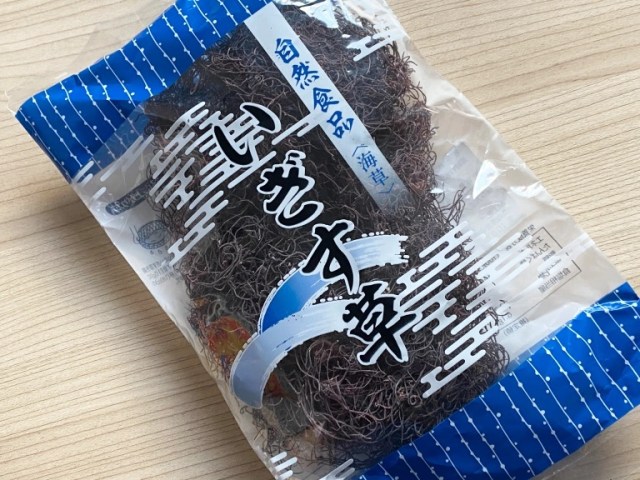
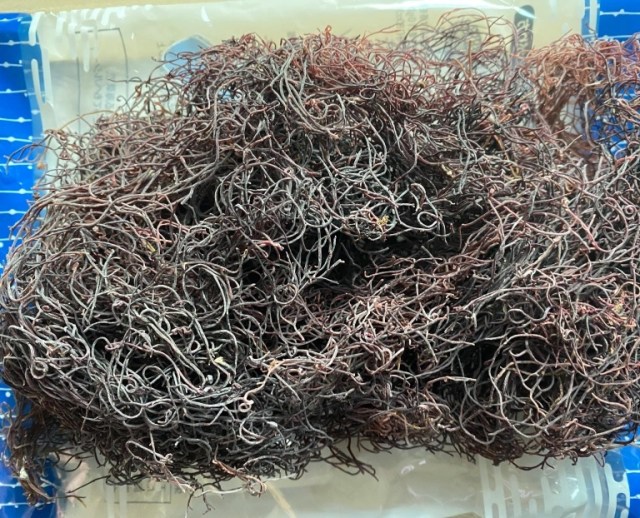
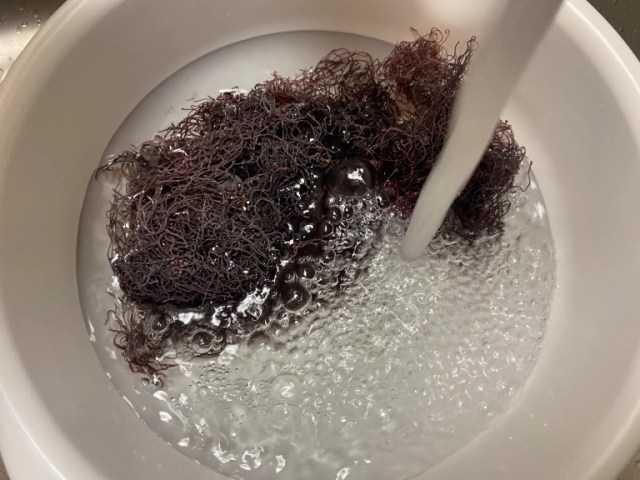
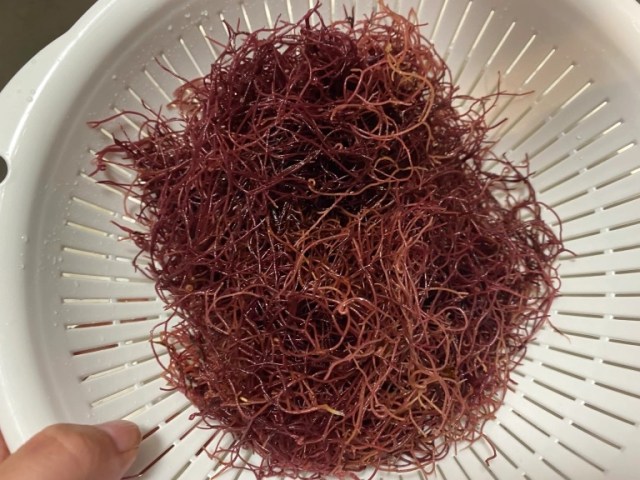
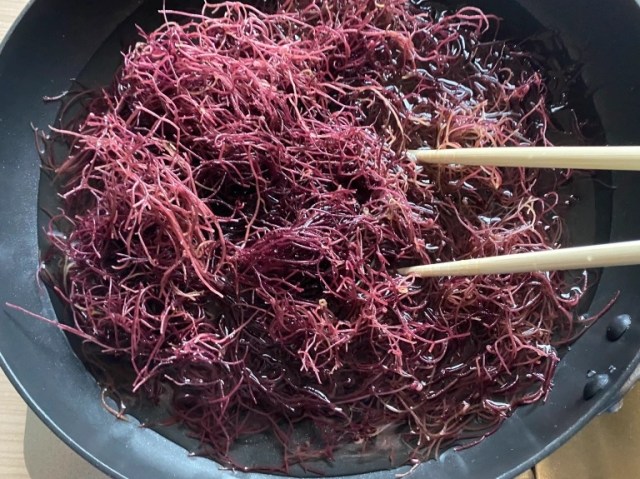
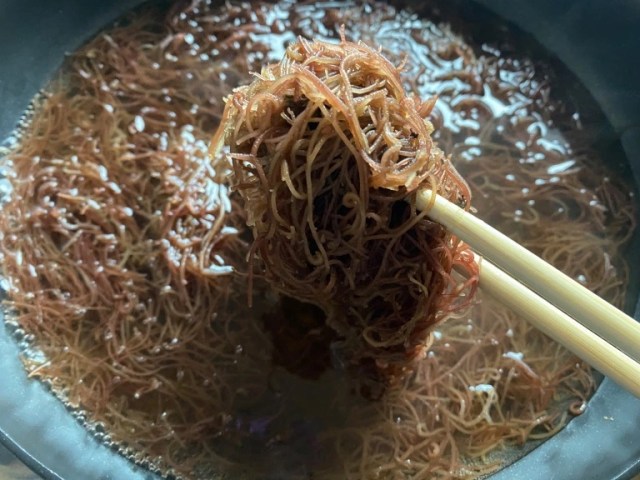
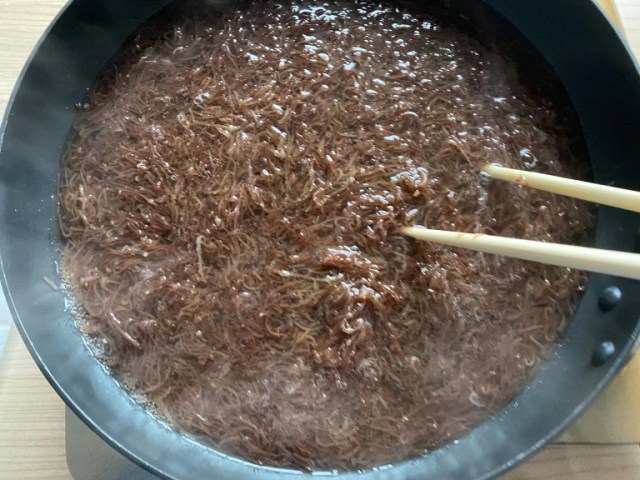


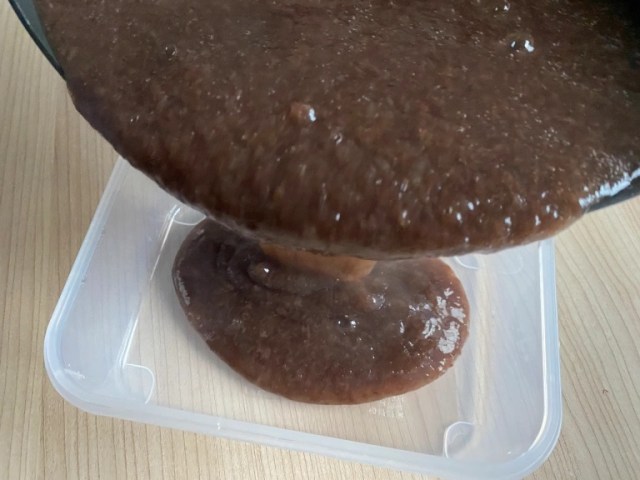
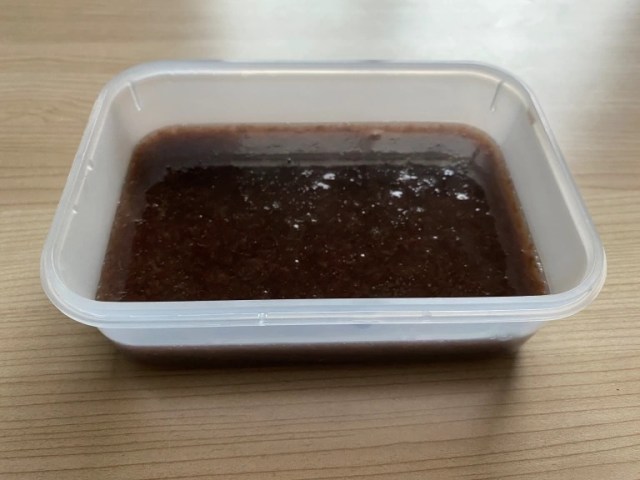
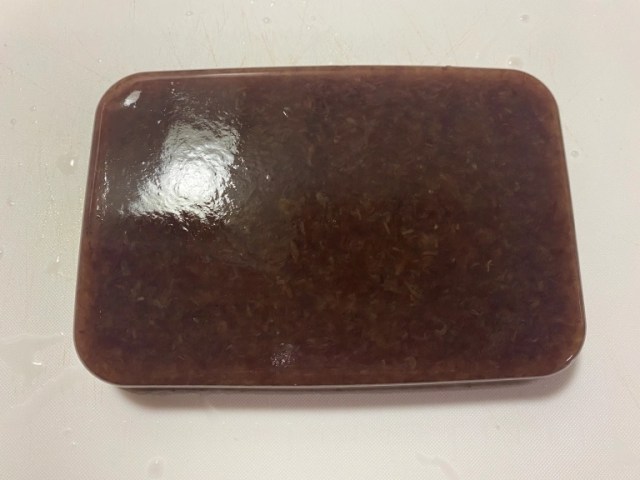
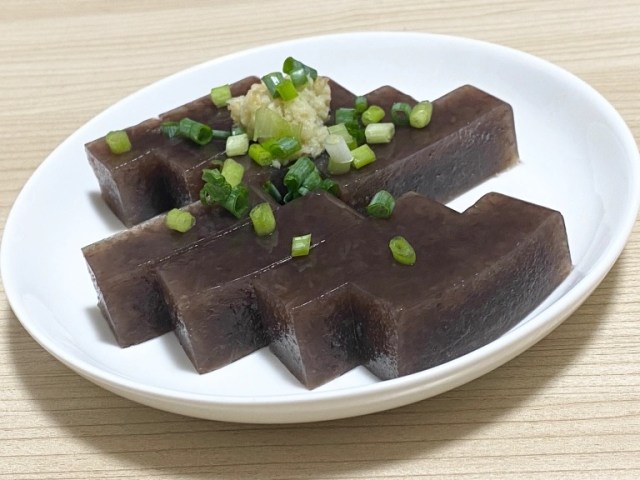
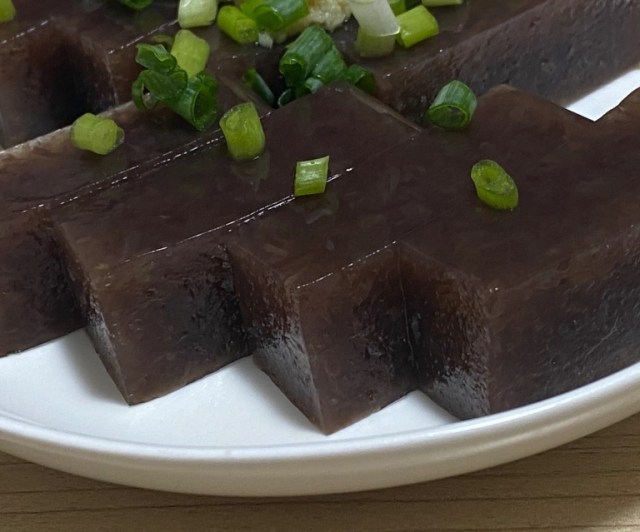
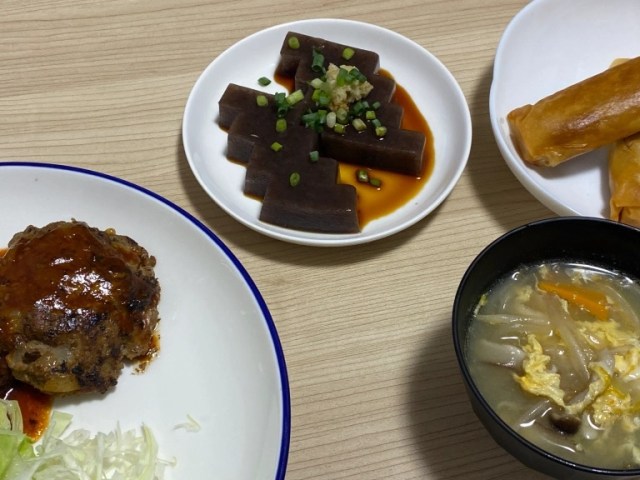
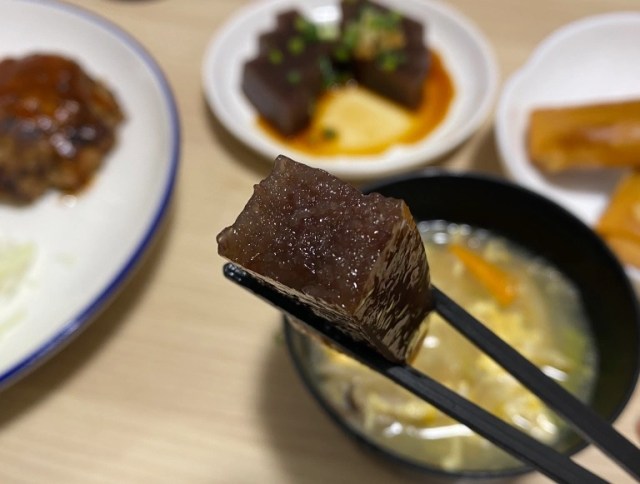
 We try Starbucks Japan’s new sand dunes Frappuccino in Tottori
We try Starbucks Japan’s new sand dunes Frappuccino in Tottori This year’s Revlon Lucky Bag is not only totally worth buying but easy to get, too
This year’s Revlon Lucky Bag is not only totally worth buying but easy to get, too We visit a ramen bar in Croatia, meet a whole new version of ramen we can’t wait to make at home
We visit a ramen bar in Croatia, meet a whole new version of ramen we can’t wait to make at home We try European Cup Noodle Soba flavors to see which ones come out on top 【Taste test】
We try European Cup Noodle Soba flavors to see which ones come out on top 【Taste test】 Have you tried Tokushima ramen? No? You should (says our obsessed Japanese-language reporter)
Have you tried Tokushima ramen? No? You should (says our obsessed Japanese-language reporter) Foreigner’s request for help in Tokyo makes us sad for the state of society
Foreigner’s request for help in Tokyo makes us sad for the state of society Japanese city loses residents’ personal data, which was on paper being transported on a windy day
Japanese city loses residents’ personal data, which was on paper being transported on a windy day Ghibli Park now selling “Grilled Frogs” from food cart in Valley of Witches
Ghibli Park now selling “Grilled Frogs” from food cart in Valley of Witches Osaka governor suggests lowering voting age to 0 to curb population decline
Osaka governor suggests lowering voting age to 0 to curb population decline Sandwiches fit for a sumo served up in Osaka【Taste Test】
Sandwiches fit for a sumo served up in Osaka【Taste Test】 Japan’s cooling body wipe sheets want to help you beat the heat, but which work and which don’t?
Japan’s cooling body wipe sheets want to help you beat the heat, but which work and which don’t? Harajuku Station’s beautiful old wooden building is set to return, with a new complex around it
Harajuku Station’s beautiful old wooden building is set to return, with a new complex around it Historical figures get manga makeovers from artists of Spy x Family, My Hero Academia and more
Historical figures get manga makeovers from artists of Spy x Family, My Hero Academia and more Beautiful Red and Blue Star luxury trains set to be Japan’s new Hokkaido travel stars
Beautiful Red and Blue Star luxury trains set to be Japan’s new Hokkaido travel stars Smash Bros. director Sakurai stabs Kirby in the face, has delicious justification for it
Smash Bros. director Sakurai stabs Kirby in the face, has delicious justification for it McDonald’s new Happy Meals offer up cute and practical Sanrio lifestyle goods
McDonald’s new Happy Meals offer up cute and practical Sanrio lifestyle goods Japanese ramen restaurants under pressure from new yen banknotes
Japanese ramen restaurants under pressure from new yen banknotes French Fries Bread in Tokyo’s Shibuya becomes a hit on social media
French Fries Bread in Tokyo’s Shibuya becomes a hit on social media Studio Ghibli releases new action figures featuring Nausicaä of the Valley of the Wind characters
Studio Ghibli releases new action figures featuring Nausicaä of the Valley of the Wind characters New private rooms on Tokaido Shinkansen change the way we travel from Tokyo to Kyoto
New private rooms on Tokaido Shinkansen change the way we travel from Tokyo to Kyoto Red light district sushi restaurant in Tokyo shows us just how wrong we were about it
Red light district sushi restaurant in Tokyo shows us just how wrong we were about it Tokyo Tsukiji fish market site to be redeveloped with 50,000-seat stadium, hotel, shopping center
Tokyo Tsukiji fish market site to be redeveloped with 50,000-seat stadium, hotel, shopping center All-you-can-drink Starbucks and amazing views part of Tokyo’s new 170 meter-high sky lounge
All-you-can-drink Starbucks and amazing views part of Tokyo’s new 170 meter-high sky lounge Beautiful Ghibli sealing wax kits let you create accessories and elegant letter decorations【Pics】
Beautiful Ghibli sealing wax kits let you create accessories and elegant letter decorations【Pics】 Studio Ghibli releases Kiki’s Delivery Service chocolate cake pouches in Japan
Studio Ghibli releases Kiki’s Delivery Service chocolate cake pouches in Japan New definition of “Japanese whiskey” goes into effect to prevent fakes from fooling overseas buyers
New definition of “Japanese whiskey” goes into effect to prevent fakes from fooling overseas buyers Our Japanese reporter visits Costco in the U.S., finds super American and very Japanese things
Our Japanese reporter visits Costco in the U.S., finds super American and very Japanese things Studio Ghibli unveils Mother’s Day gift set that captures the love in My Neighbour Totoro
Studio Ghibli unveils Mother’s Day gift set that captures the love in My Neighbour Totoro More foreign tourists than ever before in history visited Japan last month
More foreign tourists than ever before in history visited Japan last month New Pokémon cakes let you eat your way through Pikachu and all the Eevee evolutions
New Pokémon cakes let you eat your way through Pikachu and all the Eevee evolutions Sales of Japan’s most convenient train ticket/shopping payment cards suspended indefinitely
Sales of Japan’s most convenient train ticket/shopping payment cards suspended indefinitely Sold-out Studio Ghibli desktop humidifiers are back so Totoro can help you through the dry season
Sold-out Studio Ghibli desktop humidifiers are back so Totoro can help you through the dry season Japanese government to make first change to romanization spelling rules since the 1950s
Japanese government to make first change to romanization spelling rules since the 1950s Ghibli founders Toshio Suzuki and Hayao Miyazaki contribute to Japanese whisky Totoro label design
Ghibli founders Toshio Suzuki and Hayao Miyazaki contribute to Japanese whisky Totoro label design Doraemon found buried at sea as scene from 1993 anime becomes real life【Photos】
Doraemon found buried at sea as scene from 1993 anime becomes real life【Photos】 Tokyo’s most famous Starbucks is closed
Tokyo’s most famous Starbucks is closed One Piece characters’ nationalities revealed, but fans have mixed opinions
One Piece characters’ nationalities revealed, but fans have mixed opinions We asked a Uniqlo employee what four things we should buy and their suggestions didn’t disappoint
We asked a Uniqlo employee what four things we should buy and their suggestions didn’t disappoint Princesses, fruits, and blacksmiths: Study reveals the 30 most unusual family names in Japan
Princesses, fruits, and blacksmiths: Study reveals the 30 most unusual family names in Japan We visit a restaurant called ‘Otaku’ in France, eat some otaku sushi
We visit a restaurant called ‘Otaku’ in France, eat some otaku sushi Can we really become YouTubers with the Thanko YouTuber Debut fukubukuro lucky bag?
Can we really become YouTubers with the Thanko YouTuber Debut fukubukuro lucky bag? “Hey Singaporean taxi driver! Take us to the best restaurant in Singapore!”
“Hey Singaporean taxi driver! Take us to the best restaurant in Singapore!” Our Japanese language reporter gets lucky with Vietnam McDonald’s Prosperity Beef Burger
Our Japanese language reporter gets lucky with Vietnam McDonald’s Prosperity Beef Burger We went out of our comfort zone and tried barbecued camel meat at a market in Morocco
We went out of our comfort zone and tried barbecued camel meat at a market in Morocco Our Japanese reporter visits Czechia’s famous beer spas and boozily bathes in a bath of beer
Our Japanese reporter visits Czechia’s famous beer spas and boozily bathes in a bath of beer Hey, Croatian taxi driver! Take us to the restaurant with the best štrukli in Zagreb
Hey, Croatian taxi driver! Take us to the restaurant with the best štrukli in Zagreb How can you maximize the calories you burn singing karaoke?【Experiment】
How can you maximize the calories you burn singing karaoke?【Experiment】 Hey, Thai tuk-tuk driver! Take us to the best Thai restaurant in this part of Bangkok!
Hey, Thai tuk-tuk driver! Take us to the best Thai restaurant in this part of Bangkok! One minute is all you need to make this popular instant noodle meal from Okayama【SoraKitchen】
One minute is all you need to make this popular instant noodle meal from Okayama【SoraKitchen】 McDonald’s breakfast menu in Hong Kong is like nothing we’ve ever seen in Japan
McDonald’s breakfast menu in Hong Kong is like nothing we’ve ever seen in Japan Do people in Osaka really eat crunchy fried noodles with curry? We ask a local, then try it out
Do people in Osaka really eat crunchy fried noodles with curry? We ask a local, then try it out Our reporter orders food from Uber Eats, falls in love, learns that fate works in mysterious ways
Our reporter orders food from Uber Eats, falls in love, learns that fate works in mysterious ways Taste-testing Japan’s beef tongue/gacha beef vending machine in Sendai【Taste test】
Taste-testing Japan’s beef tongue/gacha beef vending machine in Sendai【Taste test】 We get our hands on a coveted Yodobashi lucky bag, this time the beauty and health gadget box
We get our hands on a coveted Yodobashi lucky bag, this time the beauty and health gadget box
Leave a Reply